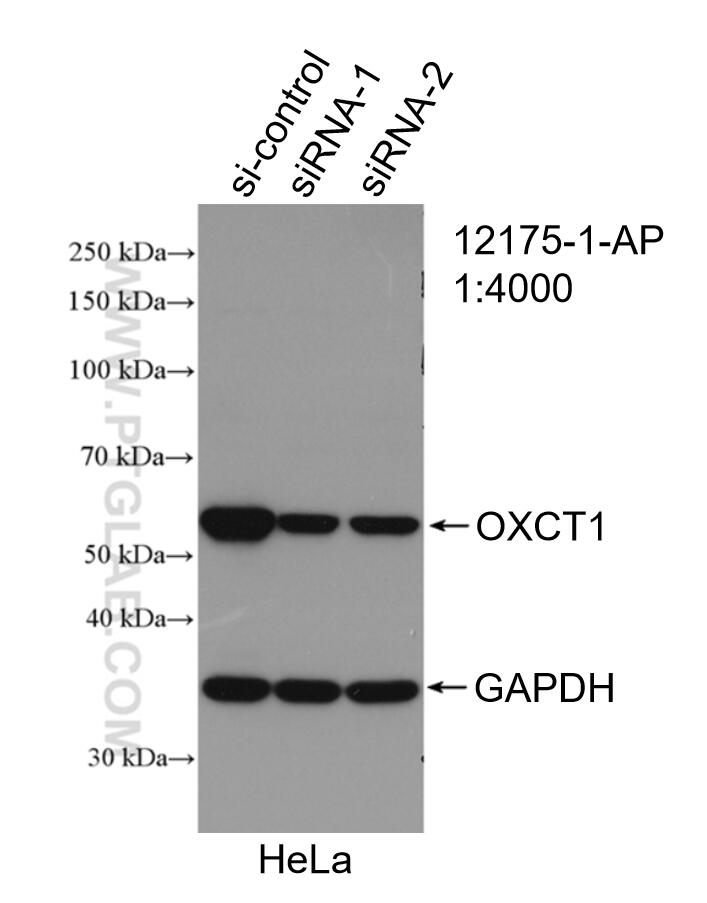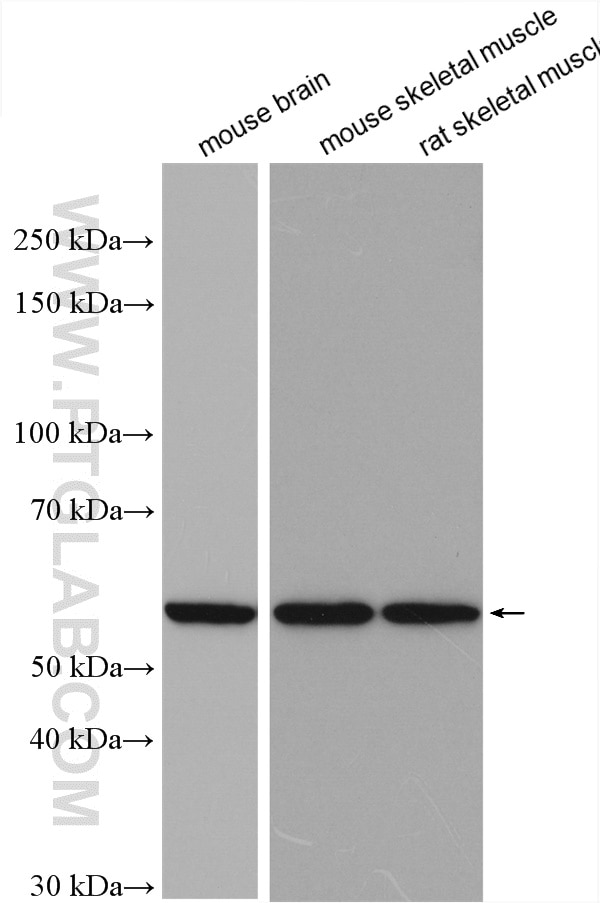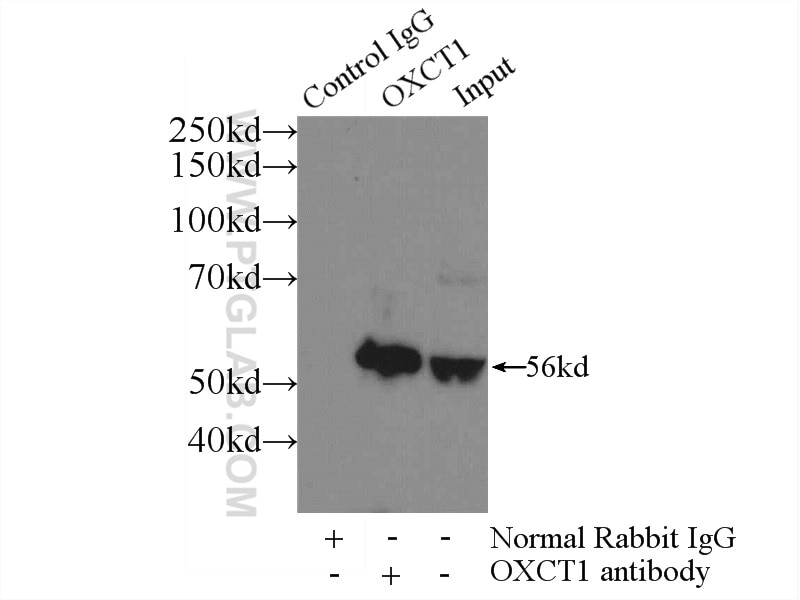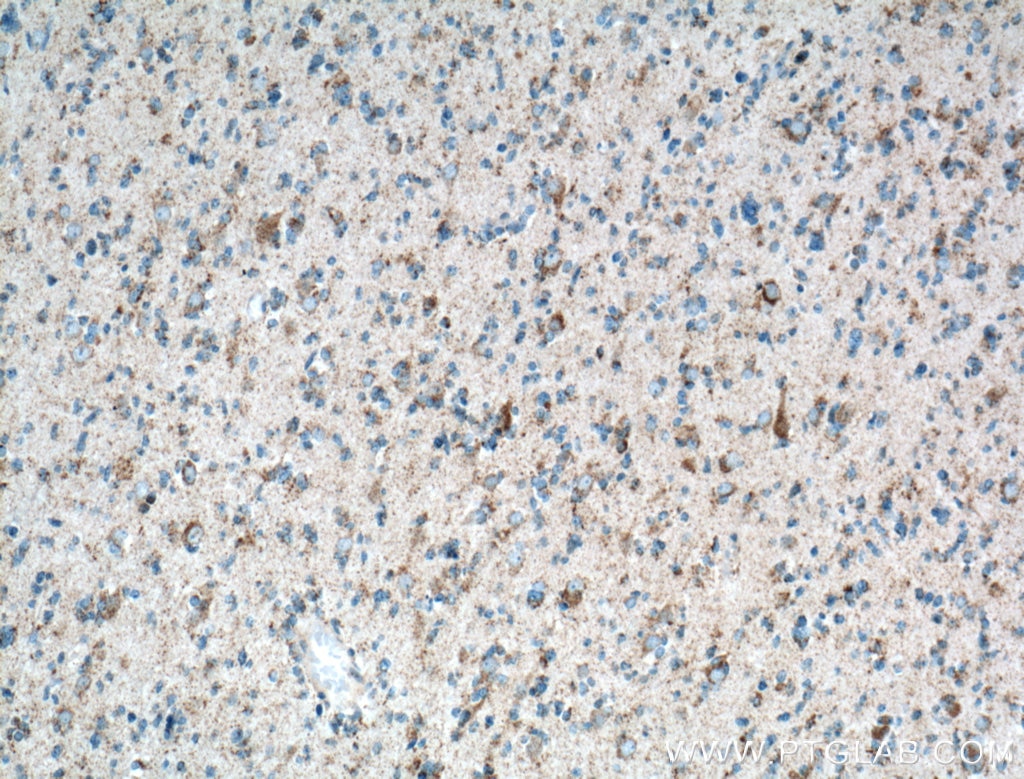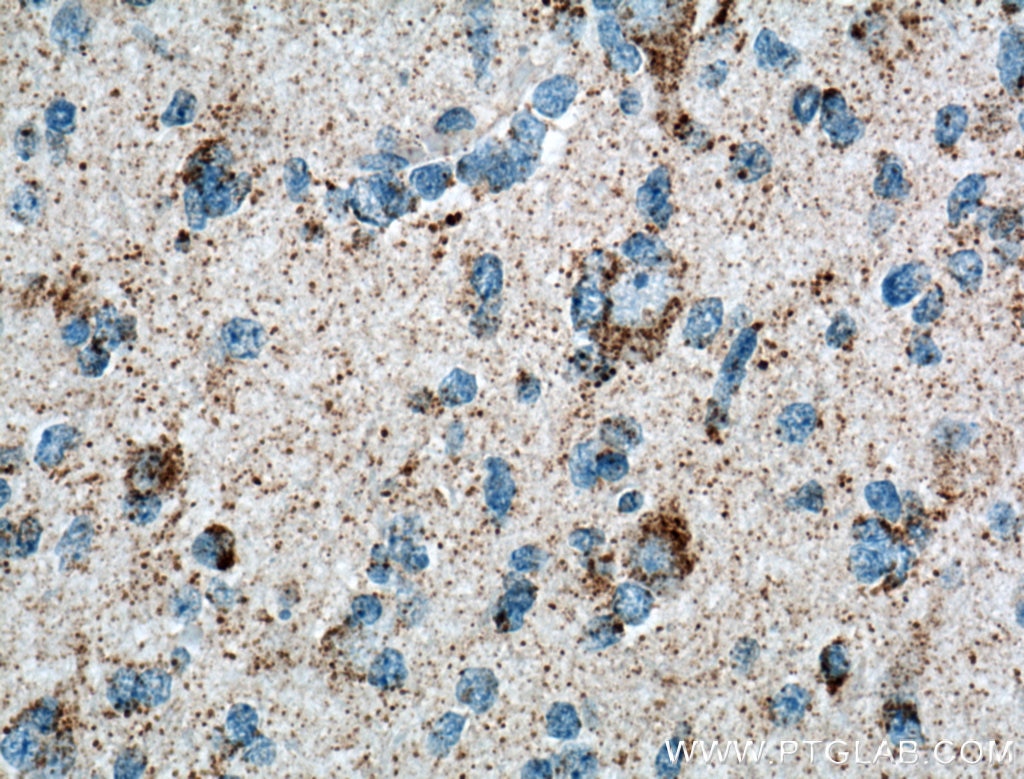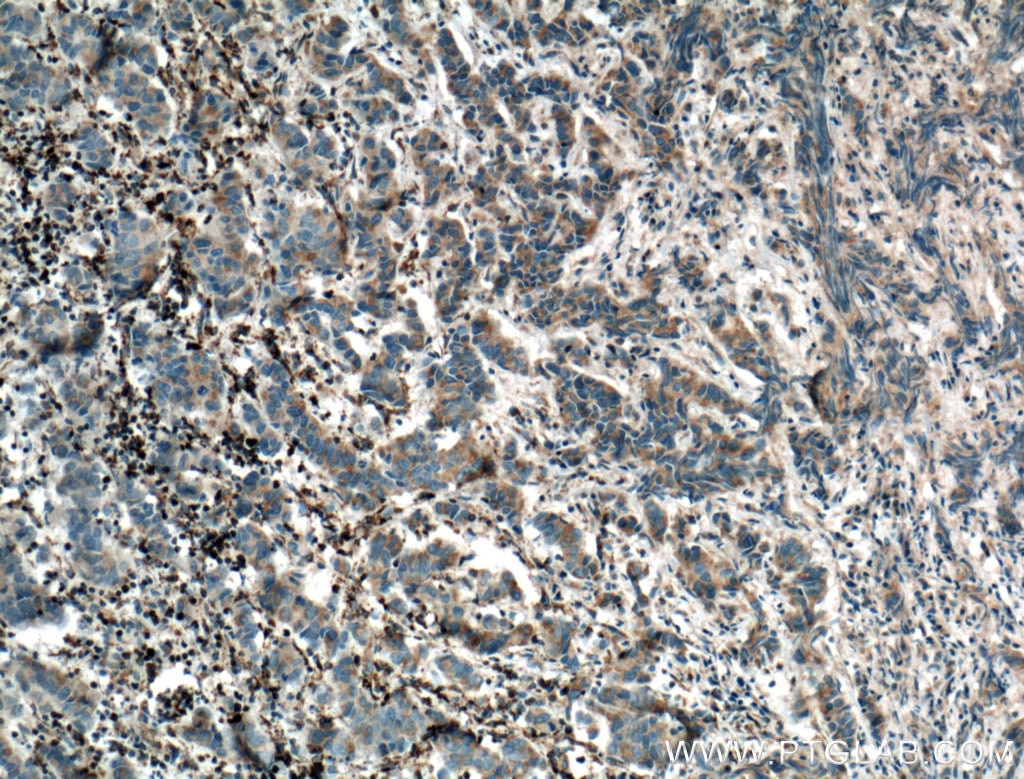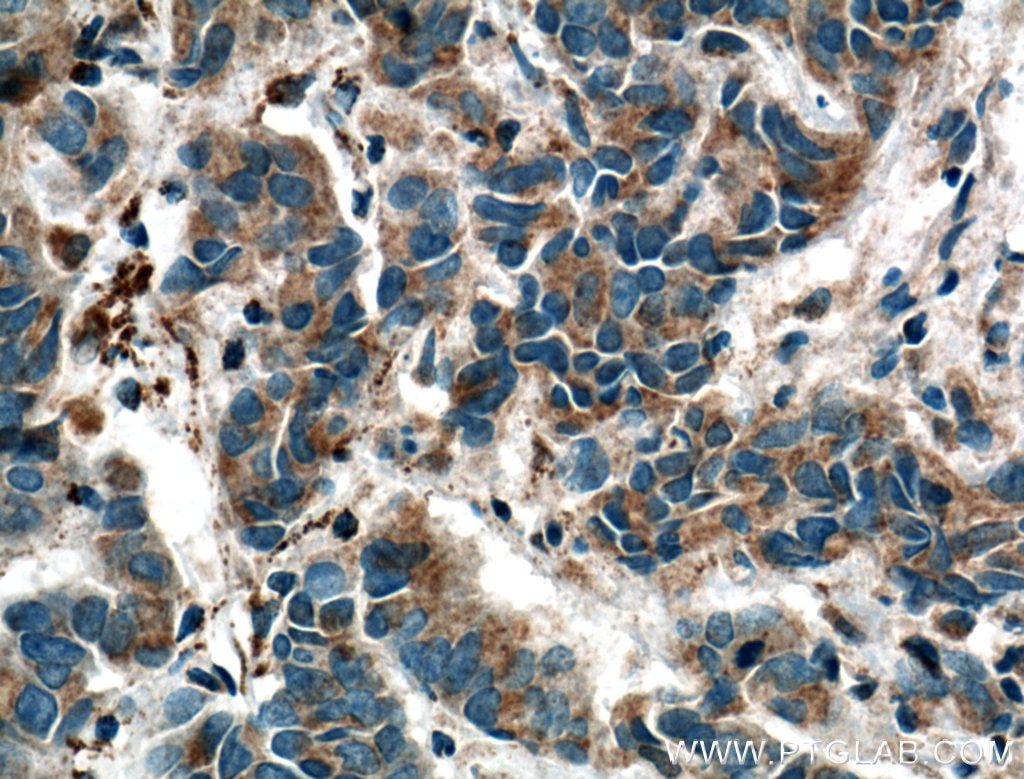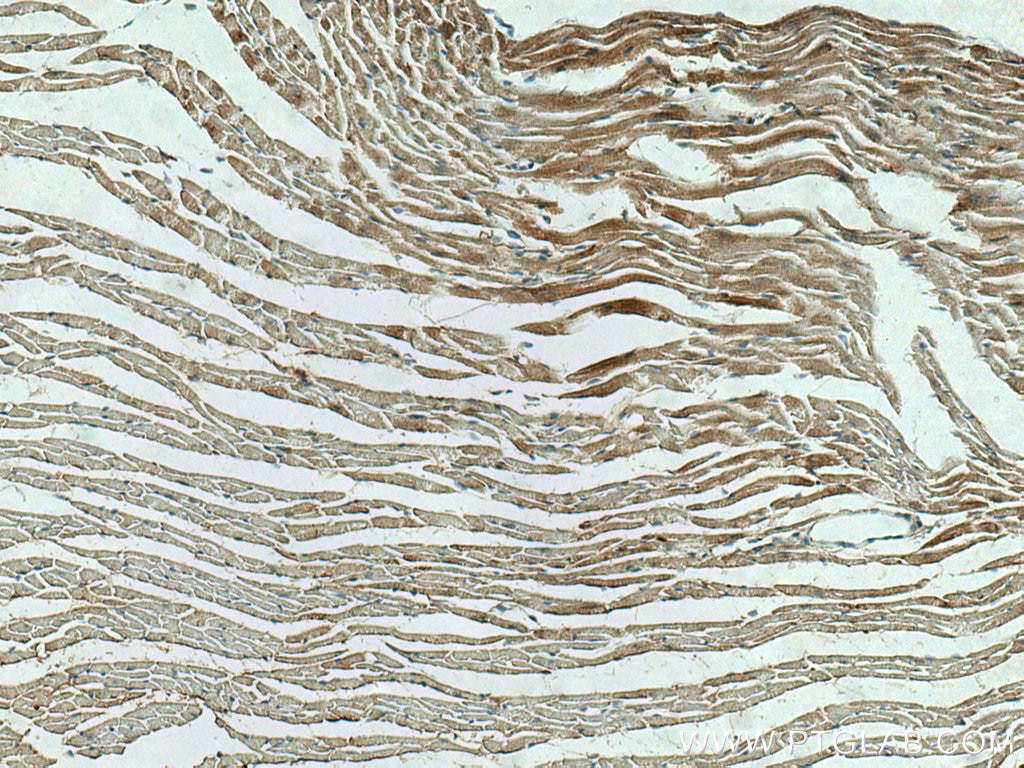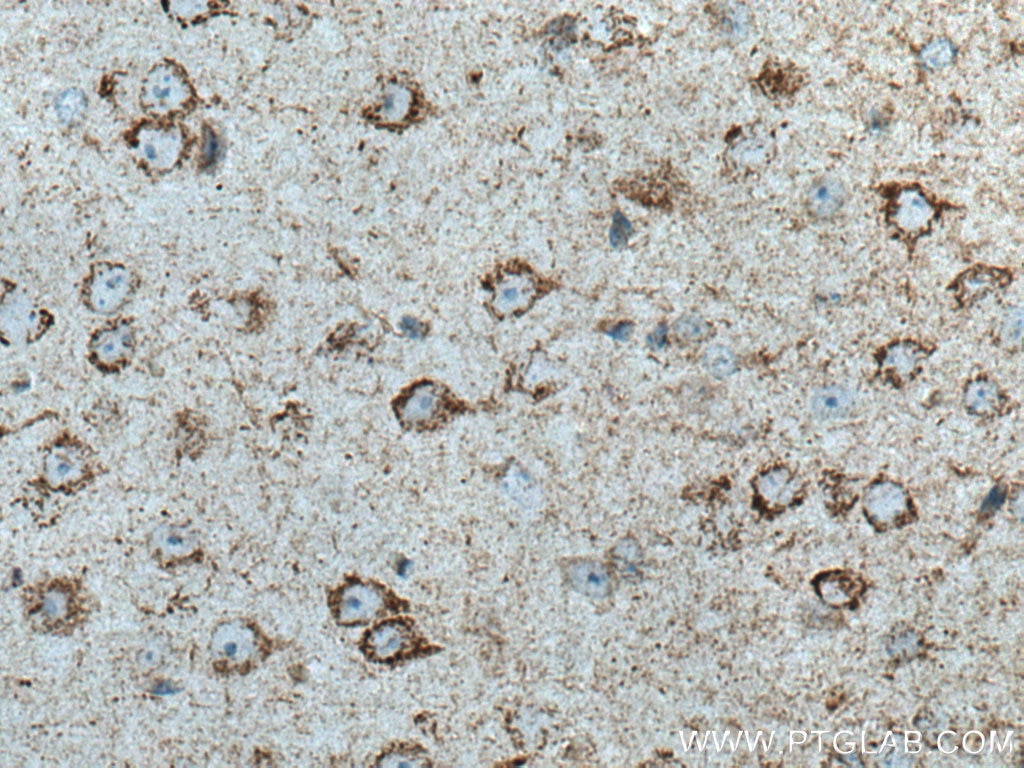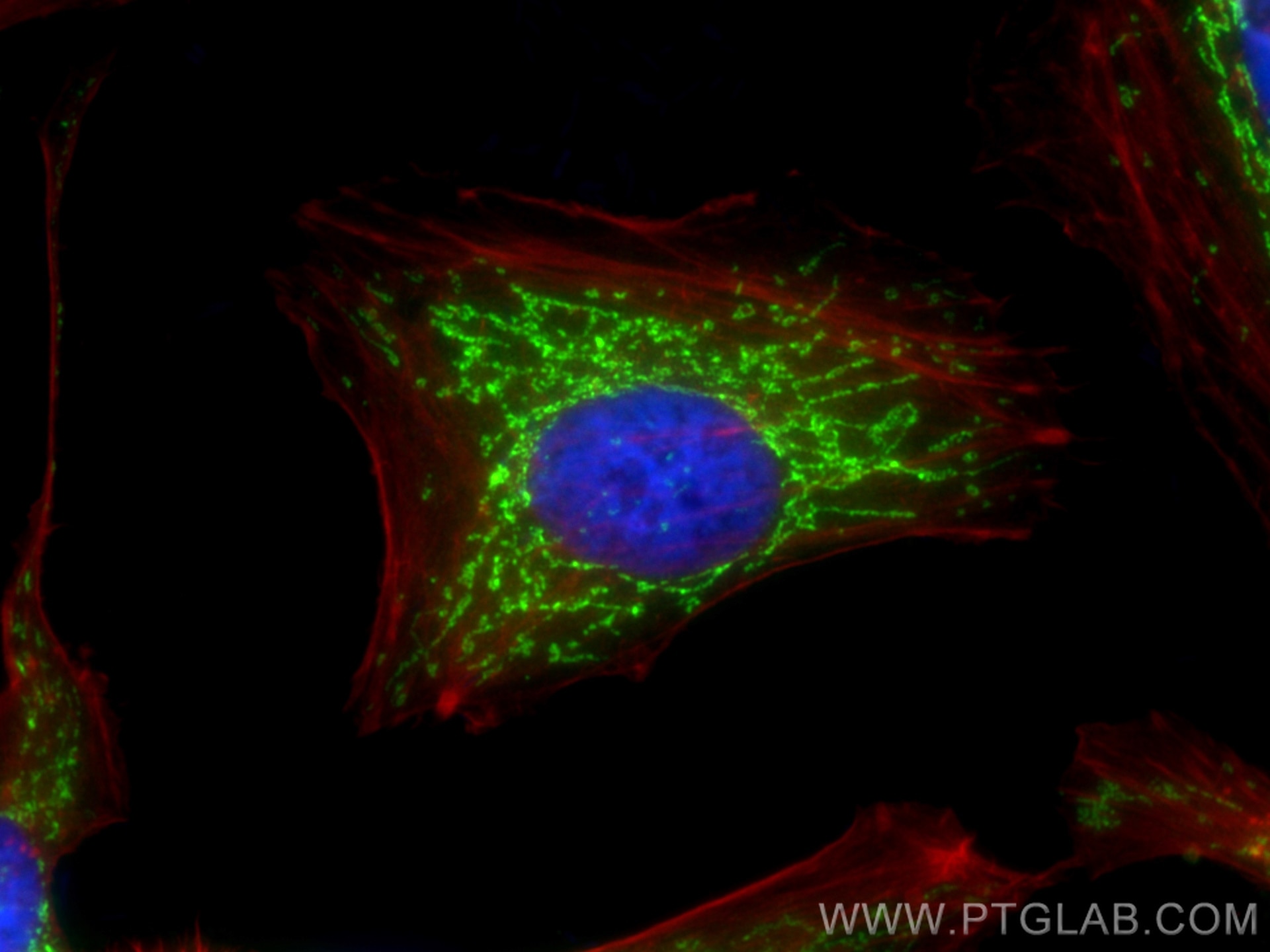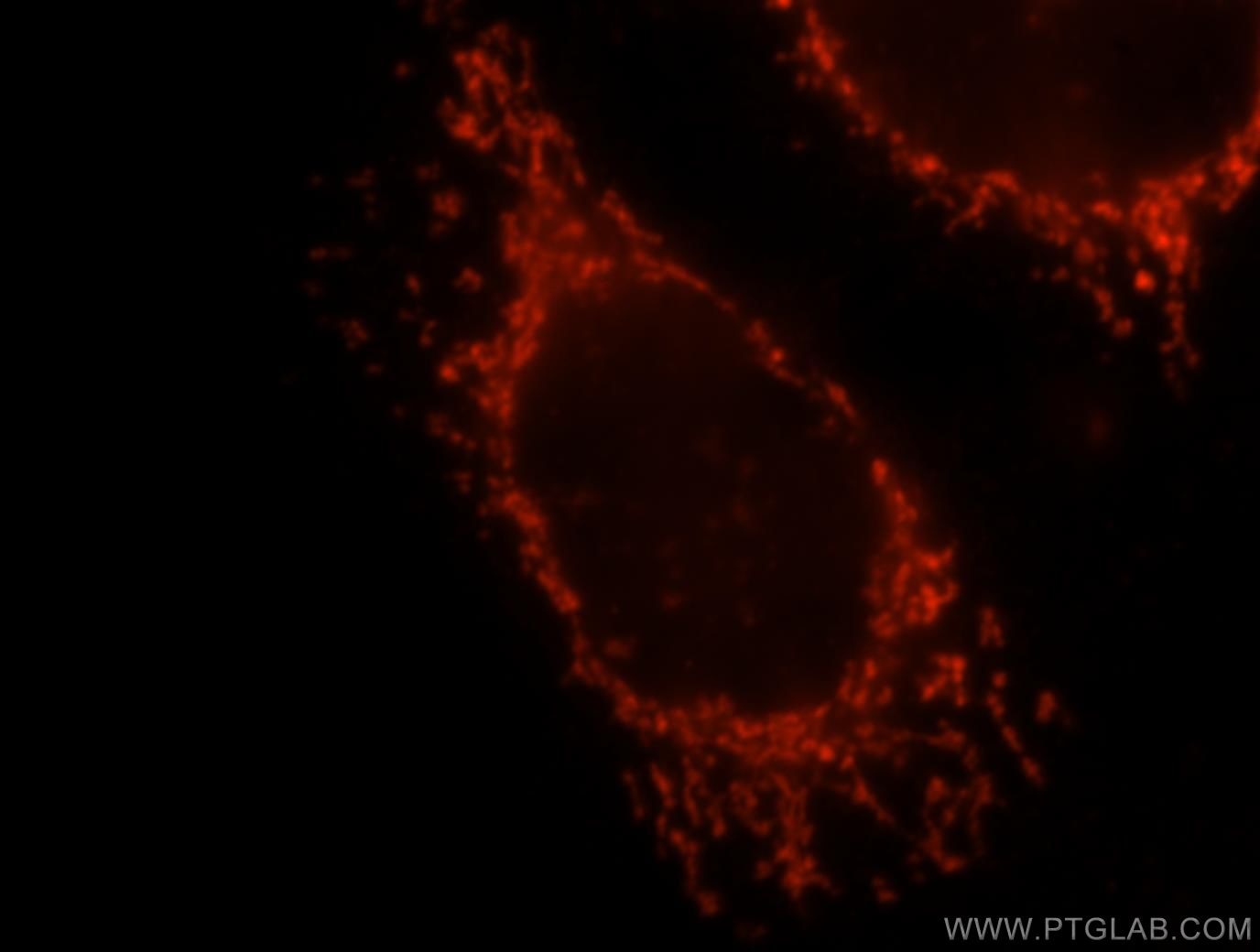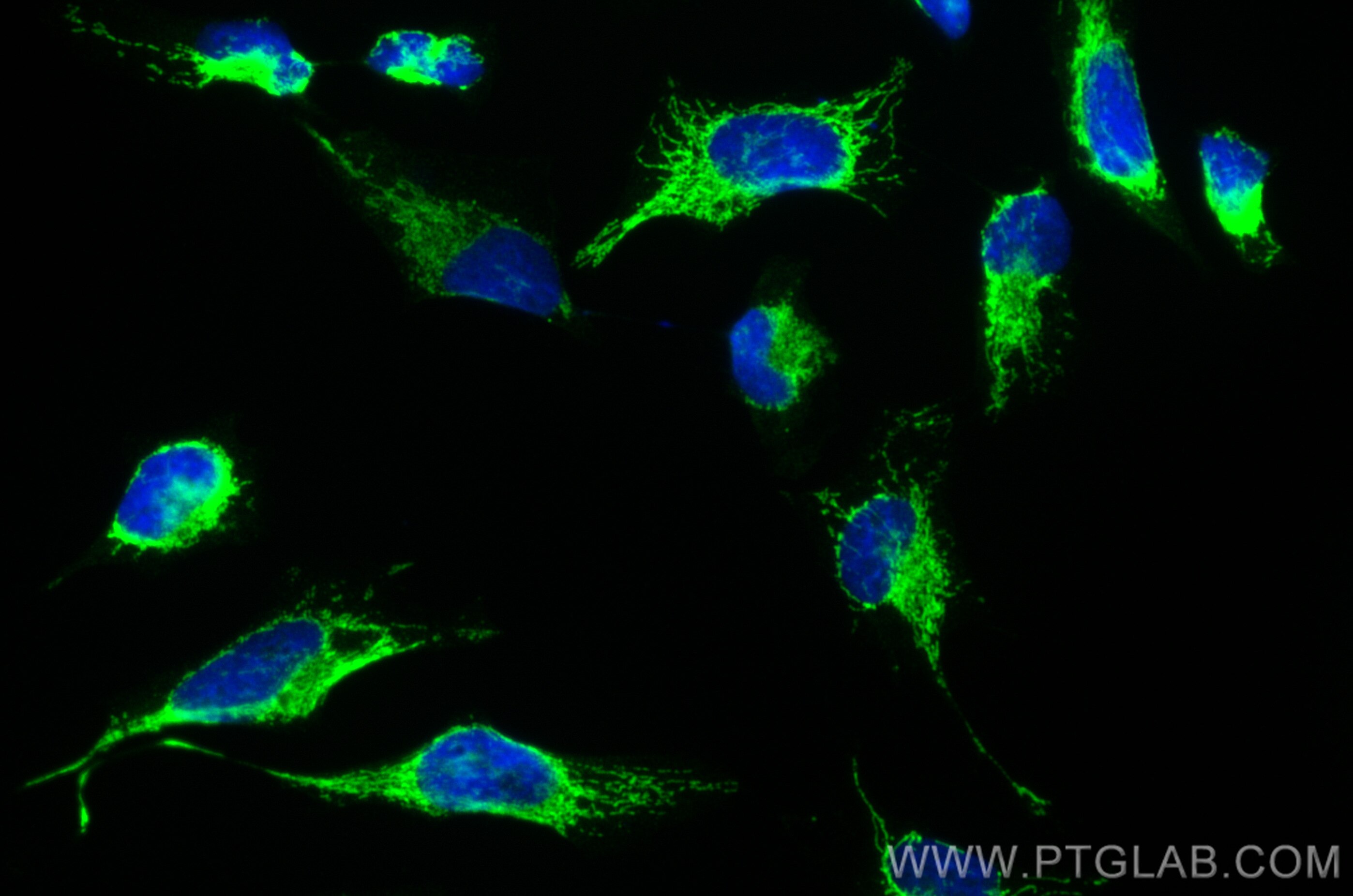- Phare
- Validé par KD/KO
Anticorps Polyclonal de lapin anti-OXCT1
OXCT1 Polyclonal Antibody for WB, IHC, IF/ICC, IP, ELISA
Hôte / Isotype
Lapin / IgG
Réactivité testée
Humain, rat, souris et plus (2)
Applications
WB, IHC, IF/ICC, IP, ELISA
Conjugaison
Non conjugué
N° de cat : 12175-1-AP
Synonymes
Galerie de données de validation
Applications testées
| Résultats positifs en WB | tissu cérébral de souris, cellules HeLa, tissu de muscle squelettique de rat, tissu de muscle squelettique de souris |
| Résultats positifs en IP | tissu cérébral de souris |
| Résultats positifs en IHC | tissu de gliome humain, tissu cardiaque de souris, tissu cérébral de souris, tissu de cancer de la prostate humain il est suggéré de démasquer l'antigène avec un tampon de TE buffer pH 9.0; (*) À défaut, 'le démasquage de l'antigène peut être 'effectué avec un tampon citrate pH 6,0. |
| Résultats positifs en IF/ICC | cellules HeLa, cellules MCF-7 |
Dilution recommandée
| Application | Dilution |
|---|---|
| Western Blot (WB) | WB : 1:1000-1:8000 |
| Immunoprécipitation (IP) | IP : 0.5-4.0 ug for 1.0-3.0 mg of total protein lysate |
| Immunohistochimie (IHC) | IHC : 1:50-1:500 |
| Immunofluorescence (IF)/ICC | IF/ICC : 1:300-1:1200 |
| It is recommended that this reagent should be titrated in each testing system to obtain optimal results. | |
| Sample-dependent, check data in validation data gallery | |
Applications publiées
| KD/KO | See 10 publications below |
| WB | See 50 publications below |
| IHC | See 3 publications below |
| IF | See 9 publications below |
Informations sur le produit
12175-1-AP cible OXCT1 dans les applications de WB, IHC, IF/ICC, IP, ELISA et montre une réactivité avec des échantillons Humain, rat, souris
| Réactivité | Humain, rat, souris |
| Réactivité citée | rat, bovin, canin, Humain, souris |
| Hôte / Isotype | Lapin / IgG |
| Clonalité | Polyclonal |
| Type | Anticorps |
| Immunogène | OXCT1 Protéine recombinante Ag2818 |
| Nom complet | 3-oxoacid CoA transferase 1 |
| Masse moléculaire calculée | 520 aa, 56 kDa |
| Poids moléculaire observé | 56 kDa |
| Numéro d’acquisition GenBank | BC009001 |
| Symbole du gène | OXCT1 |
| Identification du gène (NCBI) | 5019 |
| Conjugaison | Non conjugué |
| Forme | Liquide |
| Méthode de purification | Purification par affinité contre l'antigène |
| Tampon de stockage | PBS with 0.02% sodium azide and 50% glycerol |
| Conditions de stockage | Stocker à -20°C. Stable pendant un an après l'expédition. L'aliquotage n'est pas nécessaire pour le stockage à -20oC Les 20ul contiennent 0,1% de BSA. |
Informations générales
3-oxoacid-CoA transferase 1 (OXCT1), encoded by nuclear gene, is a mitochondrial CoA transferase required for ketone body degradation. It catalyzes the transfer of CoA from succinyl-CoA to acetoacetate, generating acetoacetyl-CoA. OXCT1 is expressed in brain, heart, and skeletal muscle, but not in liver. This antibody specifically recognizes endogenous OXCT1. (21209089)
Protocole
| Product Specific Protocols | |
|---|---|
| WB protocol for OXCT1 antibody 12175-1-AP | Download protocol |
| IHC protocol for OXCT1 antibody 12175-1-AP | Download protocol |
| IF protocol for OXCT1 antibody 12175-1-AP | Download protocol |
| IP protocol for OXCT1 antibody 12175-1-AP | Download protocol |
| Standard Protocols | |
|---|---|
| Click here to view our Standard Protocols |
Publications
| Species | Application | Title |
|---|---|---|
Cell Metab Hepatocyte-Macrophage Acetoacetate Shuttle Protects against Tissue Fibrosis.
| ||
Mol Cell OXCT1 succinylation and activation by SUCLA2 promotes ketolysis and liver tumor growth | ||
Cell Res Hepatocellular carcinoma redirects to ketolysis for progression under nutrition deprivation stress. | ||
Sci Adv Ketogenesis supports hepatic polyunsaturated fatty acid homeostasis via fatty acid elongation |
Avis
The reviews below have been submitted by verified Proteintech customers who received an incentive for providing their feedback.
FH Kerry (Verified Customer) (09-26-2019) | Too much background. We tried all the dilutions you recommended in your literature and then more outside of both ends of that range.
|
